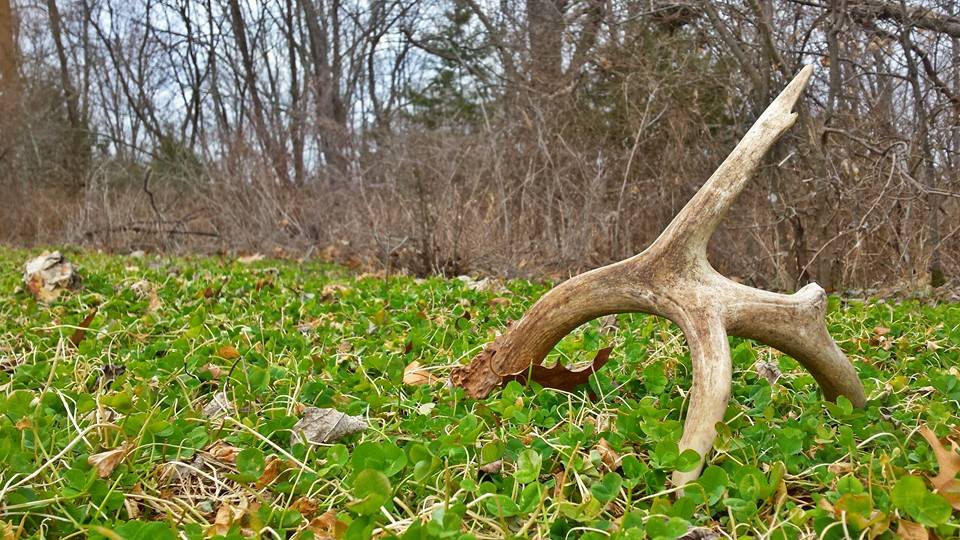Take Shed Hunting To The Next Level
Filed under: Hunting Blog
It is that time of the year when thousands of people (including myself!) take to the woods in search of shed antlers. This is an attempt to get our hands on what remains of the missed opportunities we experienced this fall! Shed hunting is a great activity to get rid of cabin fever, stretch your legs, or introduce a child to the outdoors.

This shed is from Gumby, a hit list buck. The shed was found in a small clover plot that had a lot of activity this fall and winter.
As this activity has increased with popularity over the past few years, tips and advice have flooded the outdoor magazines and web. These tips have most likely increased the productivity of finding sheds each year. But what happens when the conditions during the winter have been anything but normal? Should you change your shed hunting tactics?
Today, the forecast is calling for temperatures to reach 70 degrees! This is not our typical mid-February weather. This type of weather has come and gone for us most of the winter. Since this trend has continued we will have to alter our shed hunting tactics. The typical advice to concentrate your shed hunting efforts on south facing slopes may not be the best approach. Or perhaps you focus on the areas where deer typically feed during the late winter. These locations typically result in a good chance to find those cast antlers. However, this approach should be altered if you have seen unseasonably warm temperatures this winter.
To remain successful while shed hunting, we are constantly analyzing our Reconyx cameras and the sign we see while in the field. As a result, this shed season, we are concentrating our efforts on north facing slopes and around our Eagle Seed Broadside and clover plots. Deer have been feeding heavily in these plots since they have remained green and growing even this late into winter. Our Reconyx cameras have allowed us to identify where bucks are located, what they are feeding on, as well as the direction they are traveling from. This allows us to make a plan based on the current bedding and feeding patterns, opposed to generalized shed hunting tips. This information maximizes our chances of success, instead of aimlessly walking through the woods in areas where sheds this winter are unlikely to be found.
GrowingDeer together,
Matt Dye



